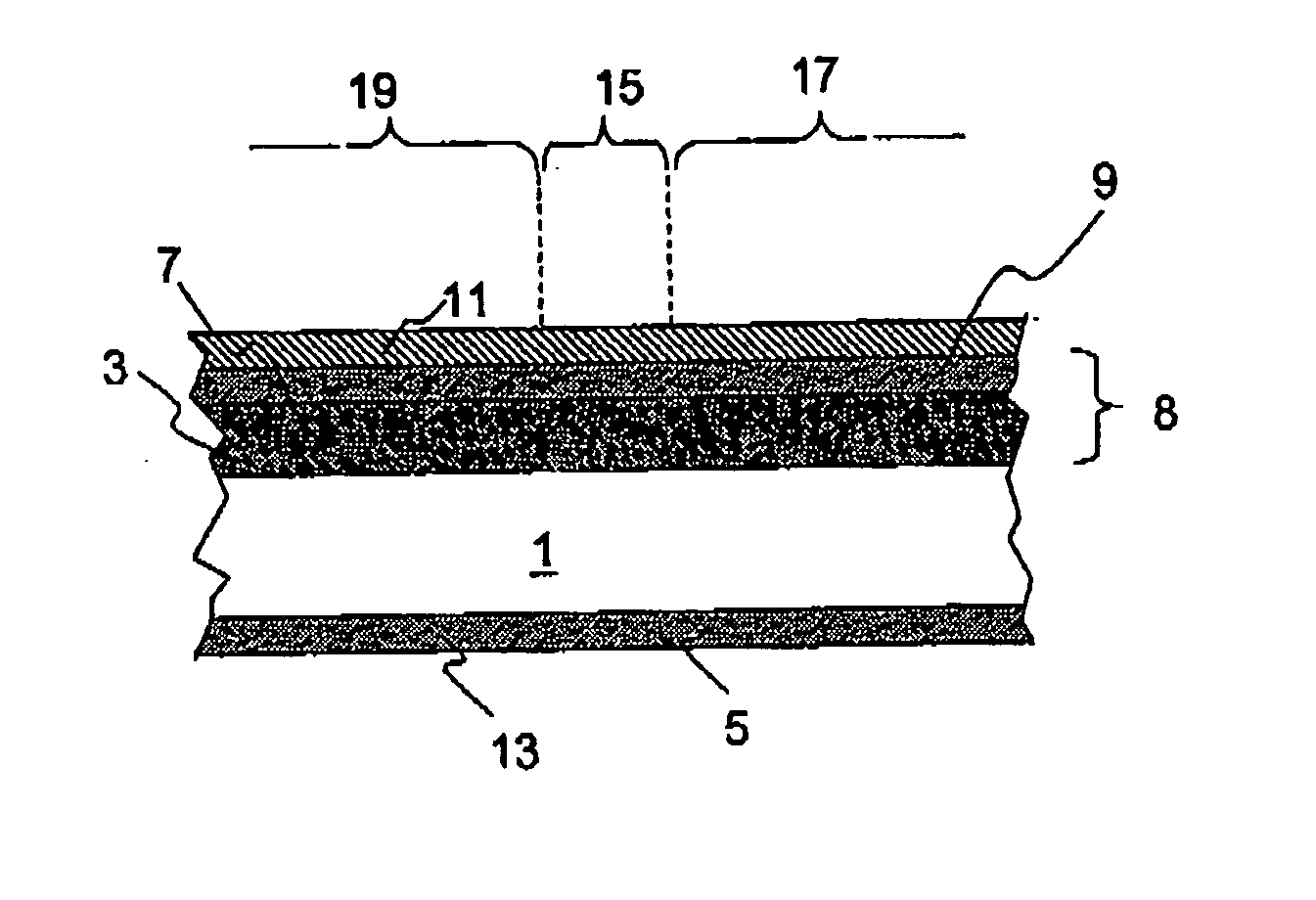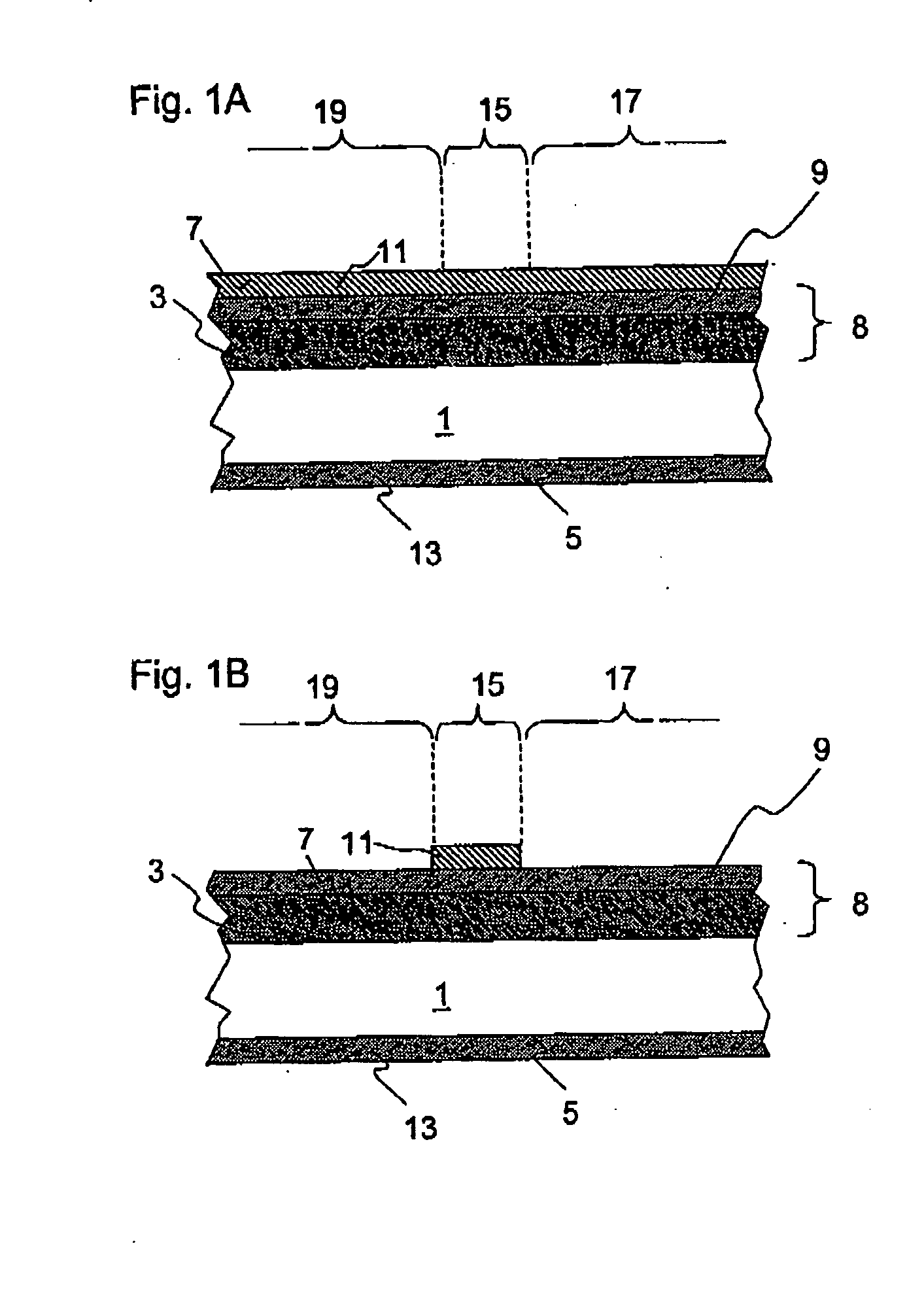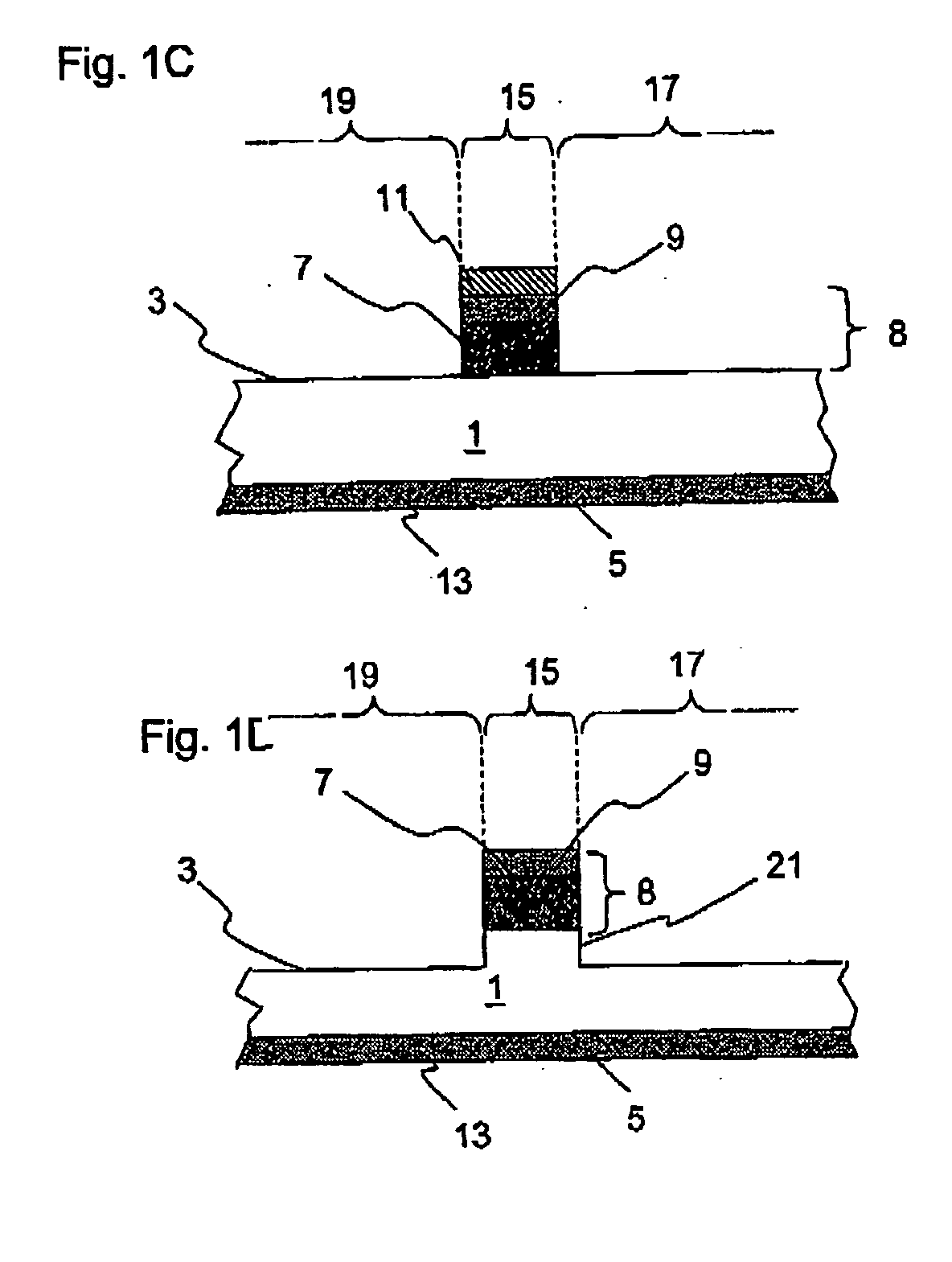Optical device, and process for producing it
a technology of optical devices and optical waveguides, applied in the direction of optical waveguide light guides, optical elements, instruments, etc., can solve the problems of high losses of waveguides, lack of sharp or readily definable refractive index profiles, and diffusion of ions in substrates, etc., to achieve the effect of improving attenuation properties
- Summary
- Abstract
- Description
- Claims
- Application Information
AI Technical Summary
Benefits of technology
Problems solved by technology
Method used
Image
Examples
Embodiment Construction
[0063]FIG. 1A to 1F use schematic cross-sectional views to show the steps involved in one embodiment of the process according to the invention for producing an optical device according to the invention.
[0064] First of all, a substrate 1 is provided with a coating 8 on a first side 3. This coating comprises a first layer 7, which includes exchange atoms in neutral or ionic form. The layer 7 may in this case, by way of example, be a metallic silver layer. It is preferable for the first layer to be applied with a thickness in a range from 20 nm to 1200 nm, preferably in a range from 100 to 600 nm.
[0065] The coating 8 also comprises a second layer 9, which is applied to the first layer 7, so that the first layer 7 is in contact with the surface of the substrate 1. The second layer 9 applied may, for example, be a titanium layer, a chromium layer, an aluminum layer or a copper layer. According to a preferred embodiment of the process, the coating 8 comprising the individual layers 7 an...
PUM
| Property | Measurement | Unit |
|---|---|---|
| thickness | aaaaa | aaaaa |
| thickness | aaaaa | aaaaa |
| thickness | aaaaa | aaaaa |
Abstract
Description
Claims
Application Information
 Login to View More
Login to View More - R&D
- Intellectual Property
- Life Sciences
- Materials
- Tech Scout
- Unparalleled Data Quality
- Higher Quality Content
- 60% Fewer Hallucinations
Browse by: Latest US Patents, China's latest patents, Technical Efficacy Thesaurus, Application Domain, Technology Topic, Popular Technical Reports.
© 2025 PatSnap. All rights reserved.Legal|Privacy policy|Modern Slavery Act Transparency Statement|Sitemap|About US| Contact US: help@patsnap.com



